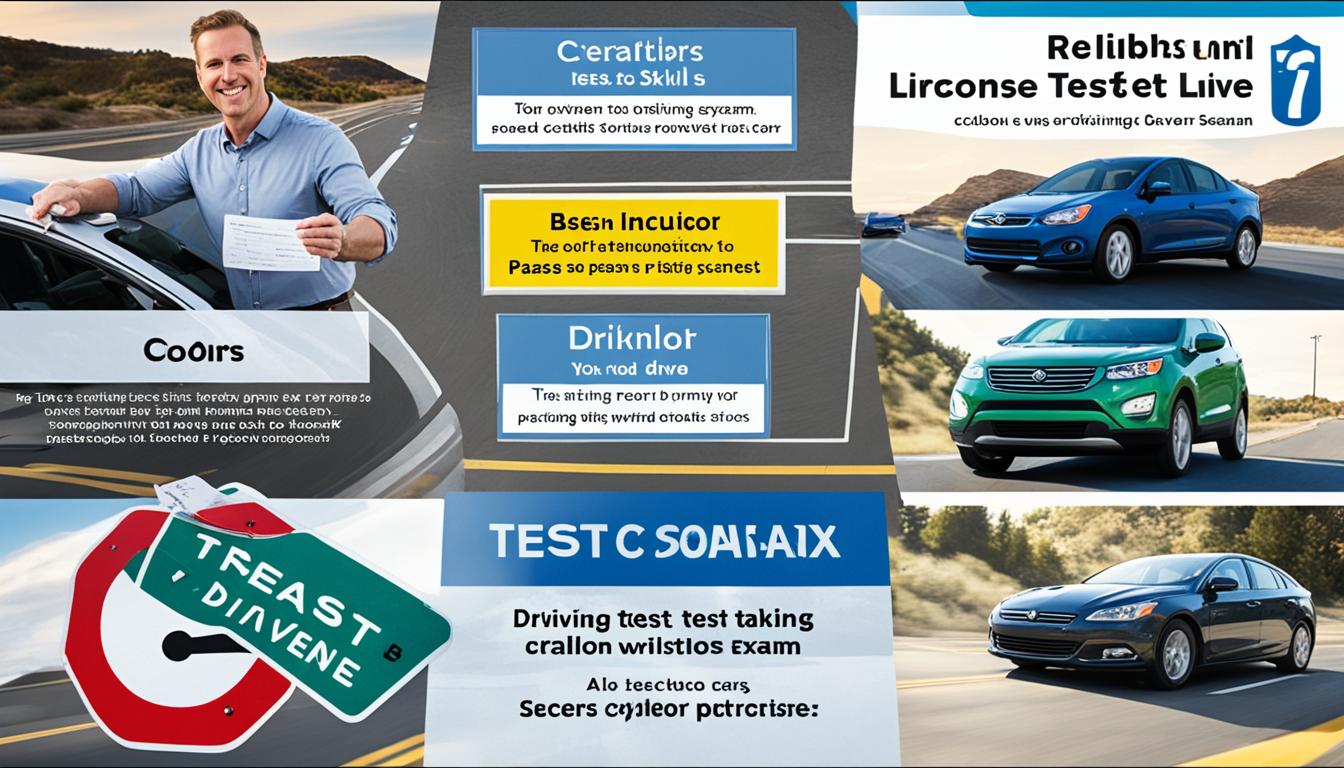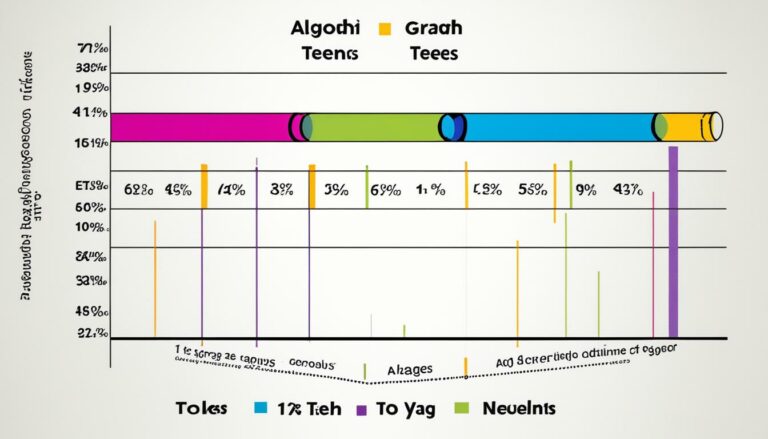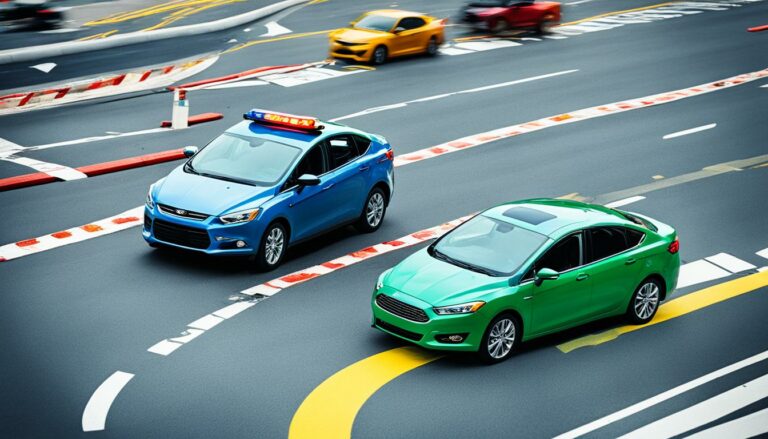Requirements to Get a Driver’s License Explained
To obtain a driver’s license in the United States, there are specific requirements that individuals must meet. These requirements ensure that drivers are eligible and capable of safely operating a vehicle on public roads. The eligibility criteria vary from state to state, but there are common requirements that most states have in place. It’s important to familiarize yourself with these requirements before applying for a driver’s license to ensure a smooth application process.
Key Takeaways:
- Each state has specific eligibility criteria for obtaining a driver’s license.
- Common requirements include age restrictions and completing necessary documentation.
- Written and practical exams must be passed to demonstrate driving competency.
- Additional requirements set by the state’s Department of Motor Vehicles (DMV) may apply.
- It’s important to research and understand the requirements of your specific state.
Classes of Driver’s Licenses
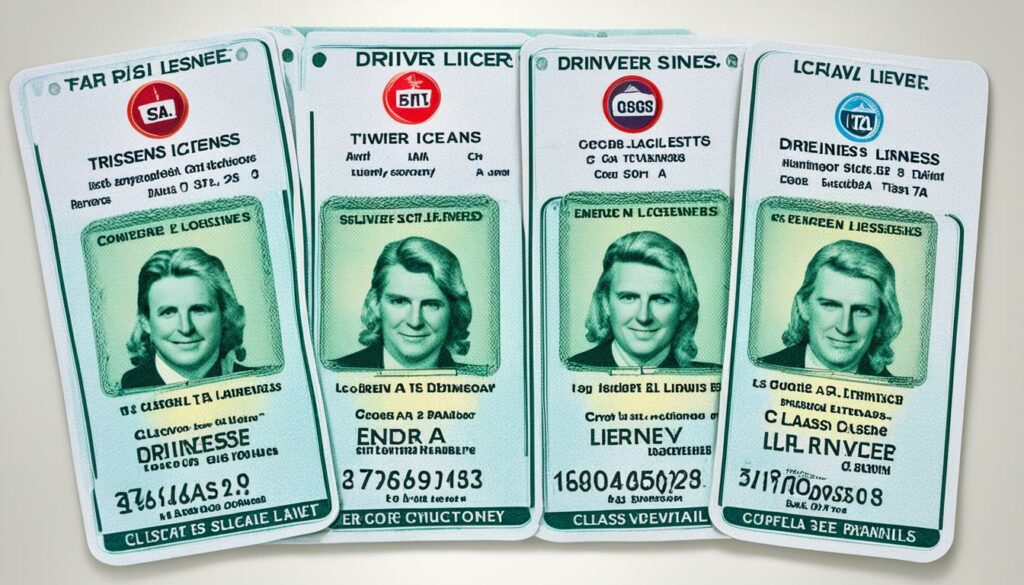
When it comes to obtaining a driver’s license, it’s important to understand the different classes available. Driver’s licenses are categorized based on the type of vehicle an individual intends to operate. Whether you’re interested in non-commercial or commercial driver’s licenses, there are specific classes to choose from.
Non-Commercial Driver’s Licenses
Non-commercial driver’s licenses are divided into several classes, each with its own requirements and restrictions. These classes include:
| License Class | Description |
|---|---|
| Class A | For vehicles with a gross weight rating of 26,001 pounds or more |
| Class B | For single vehicles rated over 26,000 pounds |
| Class C | For vehicles other than Class A or Class B |
| Class M | For motorcyclists |
Each class of non-commercial driver’s license has specific requirements and restrictions. These may include age restrictions, additional testing, or limitations on the type of vehicle that can be operated.
Commercial Driver’s Licenses
If you’re planning to operate large or heavy vehicles, such as trucks or buses, you will need a commercial driver’s license (CDL). Commercial driver’s licenses are also organized into different classes based on vehicle weight rating. The classes include:
| License Class | Description |
|---|---|
| Class A | For vehicles with a gross combination weight rating of 26,001 pounds or more |
| Class B | For vehicles with a gross vehicle weight rating of 26,001 pounds or more |
| Class C | For vehicles with a gross vehicle weight rating of less than 26,000 pounds or vehicles designed to transport 15 or more passengers |
Obtaining a commercial driver’s license requires meeting specific qualifications, including passing additional exams and meeting certain driving experience requirements based on the class you’re applying for.
Having a clear understanding of the various driver’s license classes will help you choose the right type of license for your needs. Whether you’re interested in operating non-commercial vehicles or pursuing a career in commercial driving, knowing the requirements and restrictions associated with each class is essential.
License Restrictions
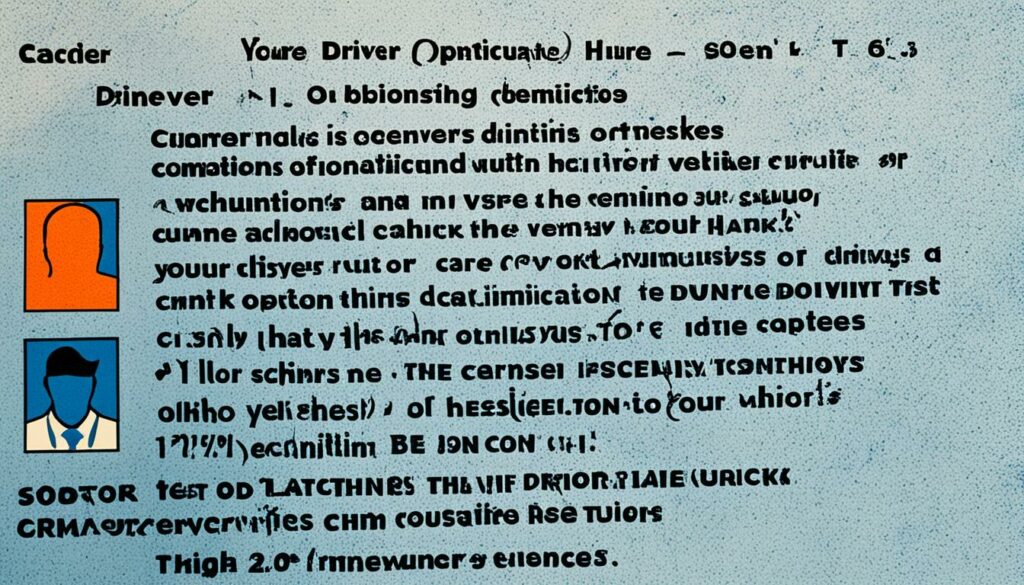
When it comes to driver’s licenses, there are certain restrictions that may be placed on individuals based on their driving ability or specific health conditions. These restrictions are in place to ensure the safety of both the driver and others on the road.
Some common license restrictions include:
- Wearing corrective lenses: Individuals with vision impairments may be required to wear glasses or contact lenses while driving.
- Vehicle equipment requirements: Certain licenses may require drivers to have specific equipment installed in their vehicles, such as hand controls for individuals with physical disabilities.
- Limitations on driving times: Some licenses restrict the hours during which a driver can operate a vehicle, often as part of graduated licensing programs for young or inexperienced drivers.
- Operating certain types of vehicles: Depending on the license class, there may be restrictions on operating certain vehicles, such as motorcycles or commercial vehicles.
It’s important for drivers to be aware of these restrictions and comply with them to ensure their own safety and the safety of others on the road.
| Restriction | Description |
|---|---|
| Wearing corrective lenses | Drivers with visual impairments may be required to wear glasses or contact lenses while driving. |
| Vehicle equipment requirements | Specific equipment may be required for drivers with physical disabilities, such as hand controls. |
| Limitations on driving times | Some licenses restrict the hours during which a driver can operate a vehicle, often for young or inexperienced drivers. |
| Operating certain types of vehicles | Depending on the license class, there may be restrictions on operating vehicles such as motorcycles or commercial vehicles. |
Knowing and adhering to these license restrictions is crucial for all drivers to ensure their own safety and the safety of others on the road.
Non-commercial Driver’s Licenses
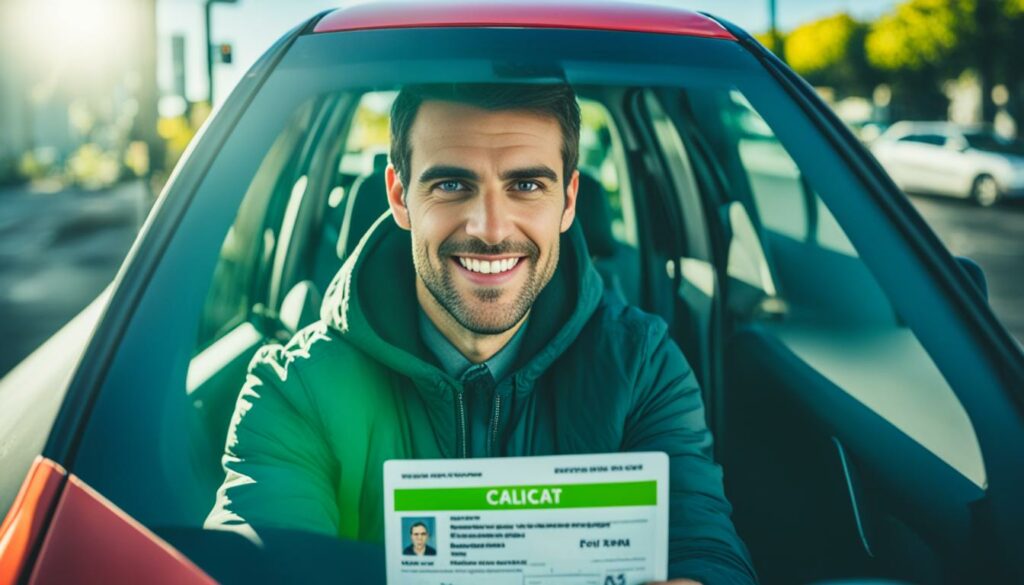
When it comes to obtaining a driver’s license for non-commercial vehicles, such as regular passenger vehicles, pick-up trucks, or vans, there are specific requirements and classes to consider. The type of license you need depends on the weight and type of vehicle you plan to operate.
In most cases, individuals seeking a non-commercial driver’s license will need a Class C license. This class is issued to drivers who have met the qualifications to operate vehicles other than those requiring a Class A or Class B license. It also includes authorization for certain emergency vehicles and motor-driven cycles.
To give you a better understanding, here’s a breakdown of the different classes of non-commercial driver’s licenses:
| Driver’s License Class | Vehicle Weight Rating | Vehicle Type |
|---|---|---|
| Class A | 26,001 pounds or more | Trucks and vehicles towing heavy loads |
| Class B | Over 26,000 pounds | Single vehicles rated over 26,000 pounds |
| Class C | Less than 26,000 pounds | Regular passenger vehicles, pick-up trucks, vans, emergency vehicles, and motor-driven cycles |
Authorized Vehicles
With a non-commercial Class C license, you have the authorization to drive regular passenger vehicles, pick-up trucks, vans, as well as certain emergency vehicles and motor-driven cycles. This allows for flexibility in operating a variety of vehicles suited to your needs.
It’s important to note that the specific requirements for obtaining a non-commercial driver’s license may vary by state. Regulations and restrictions can differ, so it’s recommended to consult your state’s Department of Motor Vehicles (DMV) for accurate and up-to-date information regarding the process and necessary documentation.
Having a non-commercial driver’s license opens up opportunities for individuals to operate regular passenger vehicles, pick-up trucks, and vans. Whether it’s for commuting, personal use, or work purposes, obtaining the right class of driver’s license is essential for legally and safely operating these vehicles.
Commercial Driver’s Licenses
Commercial driver’s licenses (CDL) are required for individuals who intend to operate large or heavy vehicles, such as trucks, buses, and tractor-trailers. CDLs are divided into several classes based on the vehicle’s weight rating.
Class A licenses are for vehicles with a gross combination weight rating (GCWR) of 26,001 pounds or more. This class is typically required for operating tractor-trailers and vehicles towing heavy loads.
Class B licenses are for vehicles with a gross vehicle weight rating (GVWR) of 26,001 pounds or more. This class is suitable for operating single vehicles or combinations weighing over 26,000 pounds, such as dump trucks or buses.
Class C licenses are for vehicles with a GVWR of less than 26,000 pounds or vehicles designed to transport 15 or more passengers. This class is appropriate for driving smaller commercial vehicles, such as vans or small buses.
| License Class | Vehicle Weight Rating | Examples |
|---|---|---|
| Class A | GCWR of 26,001 pounds or more | Tractor-trailers, heavy-duty trucks |
| Class B | GVWR of 26,001 pounds or more | Single vehicles over 26,000 pounds, buses |
| Class C | GVWR less than 26,000 pounds, or vehicles designed to transport 15 or more passengers | Smaller commercial vehicles, vans, small buses |
Obtaining a CDL requires additional training, endorsements, and passing specific written and practical exams that assess the skills necessary for safely operating commercial vehicles. In addition to the standard CDL, there may also be endorsements available for specialized vehicles or cargo, such as hazardous materials or passenger transport.
Whether you’re a long-haul trucker, bus driver, or tow truck operator, having the appropriate CDL class is crucial for ensuring you’re legally qualified to operate commercial vehicles. Make sure to understand the specific weight rating requirements and licensing process in your state to pave the way for a successful career on the road.
Taxi and Livery Licenses
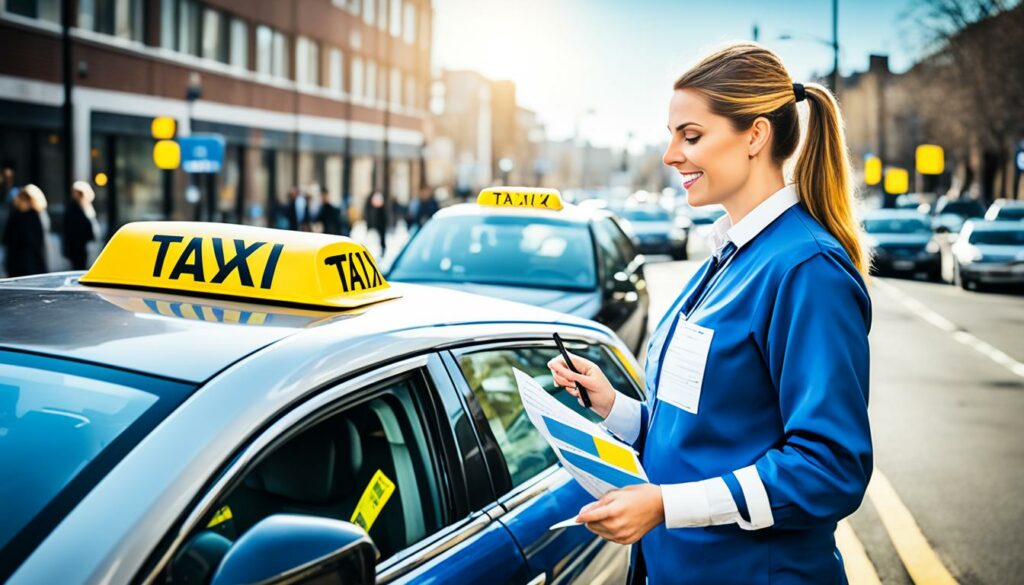
Taxi and livery drivers require a special license known as a Class E license. This license allows individuals to legally operate for-hire vehicles, such as taxis and limousines. The requirements for a Class E license may vary by state, but generally, individuals must be at least 18 years old to obtain this type of license. There may also be passenger limits and other restrictions imposed on taxi and livery drivers.
Operating a taxi or livery business requires adherence to specific regulations and obtaining the necessary licenses. In many states, taxi drivers are required to have a Class E license, along with other certifications and permits, such as a chauffeur’s license and a vehicle-for-hire inspection. These licenses ensure that drivers meet certain qualifications and comply with safety standards when providing transportation services to the public.
One of the reasons for these regulations is to maintain passenger safety and protect their interests. By obtaining a Class E license, drivers demonstrate their ability to navigate the roads safely and responsibly, ensuring a secure and comfortable journey for passengers.
Additionally, livery licenses regulate the operation of luxury transportation services, including limousines and private car services. These licenses often require drivers to meet certain standards, such as passing background checks, completing training programs, and maintaining a clean driving record. Livery licenses ensure that passengers can trust and rely on the professionalism and quality of service provided by livery drivers.
Here is an overview of the main requirements for obtaining a Class E license:
| Requirements | Details |
|---|---|
| Minimum Age | Generally 18 years old, but may vary by state |
| Driver’s Education | Completion of driver education courses or training programs |
| Written Exam | Passing a written exam covering traffic laws, regulations, and safety |
| Driving Test | Passing a practical driving test to demonstrate driving skills |
| Background Check | Clearance of a background check to ensure the driver’s fitness and reliability |
| Vehicle Inspection | Ensuring the vehicle meets safety and maintenance standards |
Obtaining a Class E license for taxi and livery services is an essential step for professionals in the transportation industry. It allows them to legally operate their businesses and provide passengers with reliable and safe transportation options.
Motorcycle Licenses
Operating a motorcycle typically requires a separate license from a regular driver’s license. Many states have specific requirements for obtaining a motorcycle license, including passing a written and practical exam. Some states also offer a junior motorcycle license (MJ) with additional restrictions for younger or less experienced riders.
The Process of Obtaining a Motorcycle License
Getting a motorcycle license involves several steps, which may vary depending on the state. Generally, the process includes the following:
- Completing a motorcycle rider’s education course: Many states require riders to complete an approved motorcycle rider’s education course before obtaining a license. These courses teach essential riding skills, safety regulations, and road awareness.
- Written knowledge test: Applicants are typically required to pass a written knowledge test that assesses their understanding of motorcycle laws, safe riding techniques, and road signs specific to motorcycles.
- Practical skills evaluation: Riders must demonstrate their ability to safely operate a motorcycle by passing a practical skills evaluation. This evaluation usually involves tasks such as maneuvering through cones, making turns, and demonstrating proper braking techniques.
- Licensing fees and paperwork: After successfully completing the educational and evaluation requirements, applicants must submit the necessary paperwork and pay any licensing fees to obtain their motorcycle license.
It is crucial to consult your state’s Department of Motor Vehicles (DMV) or equivalent agency to find the specific requirements and procedures for obtaining a motorcycle license in your area.
Junior Motorcycle License (MJ)
Some states offer a junior motorcycle license (MJ) for younger riders or those with limited experience. This license is designed to provide additional restrictions and guidelines to promote safe riding habits. The specific requirements and limitations of an MJ license may vary by state. Common restrictions include:
- Applicants must be a minimum age, such as 16 or 17 years old.
- Limitations on the engine size or horsepower of the motorcycle that can be operated.
- Prohibition from carrying passengers.
- Restrictions on riding during certain hours or on specific types of roads.
Younger or less experienced riders should consult their state’s DMV for detailed information regarding the MJ license requirements and restrictions.
Junior and Provisional Licenses
In some states, junior or provisional licenses are available for new or younger drivers. These licenses come with additional restrictions designed to ensure the safety of young drivers and gradually introduce them to full driving privileges.
Junior Licenses
Junior licenses are specifically tailored for young drivers who have recently obtained their driver’s license. These licenses often have certain limitations and restrictions that promote safe driving practices and help inexperienced drivers gain valuable on-road experience.
Some common restrictions that may apply to junior licenses include:
- Curfews: Junior drivers may have curfews in place, limiting the times during which they are allowed to drive. This ensures that they are not driving late at night, when visibility is reduced and the risk of accidents can be higher.
- Passenger Limitations: To prevent distractions and promote focused driving, junior licenses may have restrictions on the number of passengers that young drivers can carry in their vehicles. This helps reduce the likelihood of peer pressure and distractions while driving.
- Tighter Weight Restrictions: Junior licenses may also come with weight restrictions, meaning that young drivers are not permitted to operate vehicles above a certain weight limit. This helps prevent them from driving larger vehicles that they may not be fully capable of handling.
Provisional Licenses
A provisional license is similar to a junior license in that it is designed to allow new drivers to gain practical experience while still maintaining certain restrictions. These licenses are typically issued to individuals who have completed the requirements for a regular driver’s license but still need some additional time and experience before obtaining full driving privileges.
Some common restrictions that may apply to provisional licenses include:
- Supervised Driving: Provisional license holders may be required to have a supervising adult present in the vehicle while driving. This ensures that they have the guidance and support of an experienced driver as they continue to develop their skills behind the wheel.
- Restrictions on High-Risk Areas: Provisional licenses may have specific restrictions on certain high-risk areas, such as highways or busy city centers. This helps new drivers gradually gain experience on less challenging roads before venturing into more complex driving environments.
- Safe Driving Education Programs: Some states require provisional license holders to complete safe driving education programs, such as defensive driving courses or traffic school. These programs provide additional training and reinforcement of safe driving practices.
By implementing these additional restrictions, states aim to ensure that young drivers develop safe driving habits and gain the necessary experience before obtaining full driving privileges. As young drivers gain confidence, experience, and a proven track record of safe driving, these restrictions are gradually lifted, allowing them to enjoy the freedoms that come with a regular driver’s license.
| Junior Licenses | Provisional Licenses |
|---|---|
| Curfews | Supervised Driving |
| Passenger Limitations | Restrictions on High-Risk Areas |
| Tighter Weight Restrictions | Safe Driving Education Programs |
Enhanced Licenses and Handicap Permits
While the standard driver’s license grants individuals the privilege to drive, some states offer enhanced licenses that provide additional benefits. Enhanced licenses serve as a form of identification for re-entering the US from other countries. These licenses are equipped with enhanced security features and meet the requirements of the Western Hemisphere Travel Initiative, making them a convenient option for frequent travelers. Along with driving privileges, enhanced licenses offer an added level of convenience for those crossing borders.
On the other hand, handicap permits are an essential form of support for individuals with disabilities. These permits are issued to individuals who meet specific guidelines for requiring handicap driving and parking access. Handicap permits provide accommodations that promote mobility, making it easier for individuals with disabilities to access essential services and participate in daily activities. Whether it’s finding accessible parking or utilizing designated handicap parking spaces, these permits play a crucial role in enhancing the quality of life for individuals with disabilities.
When it comes to obtaining an enhanced license or a handicap permit, it’s important to understand the application process and eligibility requirements set forth by each state’s Department of Motor Vehicles (DMV). These requirements may vary, so it’s always best to consult the official DMV website or visit a local DMV office for the most accurate and up-to-date information.
In conclusion, enhanced licenses and handicap permits serve different but equally important purposes. Enhanced licenses provide added convenience for frequent travelers, while handicap permits offer essential support and accommodations for individuals with disabilities. Both of these special driving permits contribute to a more inclusive and accessible transportation system for all individuals.
Conclusion
Obtaining a driver’s license is a process that requires meeting specific requirements set by your state’s Department of Motor Vehicles (DMV). These requirements typically include age restrictions, completing necessary documentation, passing written and practical exams, and meeting any additional requirements based on the type of license you are applying for.
It is important to familiarize yourself with the specific requirements of your state to ensure a smooth application process. Be sure to gather all the required documents, such as proof of identification, residency, and Social Security number, before heading to the DMV. Prepare for the written exam by studying your state’s driver’s manual and take advantage of any practice tests available.
When it comes to the practical exam, practice your driving skills and make sure you are comfortable behind the wheel. Familiarize yourself with the traffic laws and regulations in your state. Once you have successfully fulfilled all the requirements, you will be issued your driver’s license, granting you the freedom and independence to hit the road.
FAQ
What are the requirements to get a driver’s license?
The requirements to get a driver’s license vary by state, but generally include meeting age restrictions, completing necessary documentation, and passing written and practical exams.
What are the different classes of driver’s licenses?
Driver’s licenses are divided into several classes, including Class A, Class B, Class C, and Class M. Each class has specific requirements and restrictions based on the type of vehicle an individual intends to operate.
Are there any restrictions on driver’s licenses?
Yes, there can be restrictions placed on driver’s licenses based on driving ability or certain health conditions. These restrictions can include wearing corrective lenses, adhering to vehicle equipment requirements, and limitations on driving times or operating certain types of vehicles.
What is a non-commercial driver’s license?
A non-commercial driver’s license is issued to individuals who will be operating regular passenger vehicles, pick-up trucks, or vans. The specific class of driver’s license required depends on the weight and type of vehicle being operated.
What is a commercial driver’s license (CDL)?
A commercial driver’s license (CDL) is required for individuals who plan to operate large or heavy vehicles, such as trucks, buses, and tractor-trailers. CDLs are divided into several classes based on vehicle weight rating.
What is a Class E license?
A Class E license is a special license for taxi and livery drivers, allowing them to legally operate for-hire vehicles like taxis and limousines. The requirements for a Class E license may vary by state, but individuals generally need to be at least 18 years old to obtain it.
How do I get a motorcycle license?
Operating a motorcycle typically requires a separate license from a regular driver’s license. Many states have specific requirements for obtaining a motorcycle license, including passing a written and practical exam.
Are there special licenses for new or young drivers?
Some states offer junior or provisional licenses for new or young drivers. These licenses often come with additional restrictions, including curfews, passenger limitations, and tighter weight restrictions, to ensure the safety of young drivers.
What are enhanced licenses and handicap permits?
Enhanced licenses not only grant driving privileges but also serve as a form of identification for re-entering the US from other countries. Handicap permits are issued to individuals who meet specific guidelines for requiring handicap driving and parking access, providing accommodations for individuals with disabilities.
What is the conclusion about driver’s license requirements?
To obtain a driver’s license, individuals must meet certain requirements set by the state’s DMV, including age restrictions, completing necessary documentation, passing written and practical exams, and meeting any additional requirements based on the type of license being sought.

